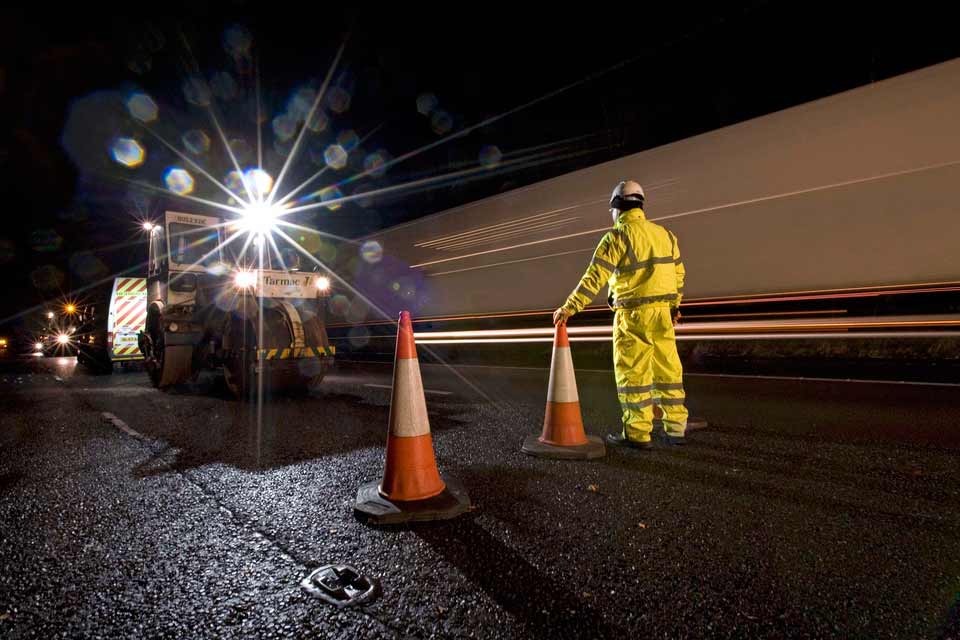Local authorities have published which roads will benefit from the first tranche of the Government’s £8.3 billion package of 'reallocated' HS2 funding from the cancellation of Phase 2 of the rail infrastructure project.
The cash injection was announced in November 2023, in what the Government described as the country’s ‘biggest ever’ road resurfacing programme.
It was, it said, enough to resurface more than 5,000 miles of road across the country over the next 11 years.
As a condition of this funding, and to make sure money is being spent on pothole repairs, local authorities are required to publish a two-year plan detailing exactly which local roads will benefit.
The Department for Transport (DfT) has now revealed 102 of the 119 authorities that received funding have responded to its survey request to set out their plans.
Among the regions pledging to resurface the highest volume of roads are the West Midlands (600,000 square metres) and East Midlands (350,000 square metres), with plans outlined for problem spots across the country including: the A43 at Towcester, the A164 between Beverley and Hessle, and the A4146 at Leighton Buzzard.
An initiative intending to bring increased transparency to how local councils deliver taxpayer-funded improvements, local people can now immediately see the benefits to their area made possible by not investing money on Phase 2 of HS2, holding their local authority to account for delivering local road improvements, says the DfT.
It has already been clear with those local authorities that have failed to publish reports that they could see the withdrawal of future funding to resurface roads.
Local people are encouraged to check their authority websites and see which roads are planned to be maintained, it said.
The Government says that all of the £19.8bn not spent on the northern leg of HS2 will be reinvested in transport across the north of England, all of the £9.6bn saved from the Midlands leg will be reinvested in transport across the Midlands, with the £6.5bn saved by not extending the line from Old Oak Common to Euston being spread across every other region in the country.
Transport secretary Mark Harper added: “Alongside this unprecedented funding, which is already being used to improve local roads, we’re making sure local people can hold their local authority to account and see for themselves how the investment will be spent to improve local roads for years to come.”
Having submitted their first reports last month, councils will now also be required to submit quarterly reports from June, announcing work which has taken place over three months, meaning local people will now regularly be able to scrutinise the progress their local authority is doing to tackle potholes.
RAC head of policy Simon Williams said: “It’s very encouraging to see so many local authorities quickly setting out how they’ll use the first tranche of the Government’s reallocated HS2 funding to improve their roads.
“Drivers will be pleased to see potholes fixed and roads resurfaced, especially as our research shows the poor state of local carriageways is their number-one concern.
“We hope councils will also use this extra money to carry out vital surface dressing work which helps prevent cracking in the cold winter months by sealing roads against water ingress.
“The prime time for this life-extending work is between April and September, so time is of the essence.”
However, while welcoming the funding as a “positive step”, Rick Green, chair of the Asphalt Industry Alliance, said: “This additional funding is only enough to resurface 5,000 miles of local roads over 11 years.
“This sounds like a lot, but it is just 2.7% of the network in England and London, where the funding is being made available, while our 2024 Alarm survey report highlights that there are already 31,000 miles of local roads reported to have less than five years’ life remaining.
“It is clear that the additional money, while welcome, is not going to be enough to halt the ongoing decline in conditions.
“We need to get to the point where local authority highway engineers can plan and proactively carry out repairs and preventative works in the most timely and efficient way to the greatest benefit of all road users.”

























Login to comment
Comments
No comments have been made yet.